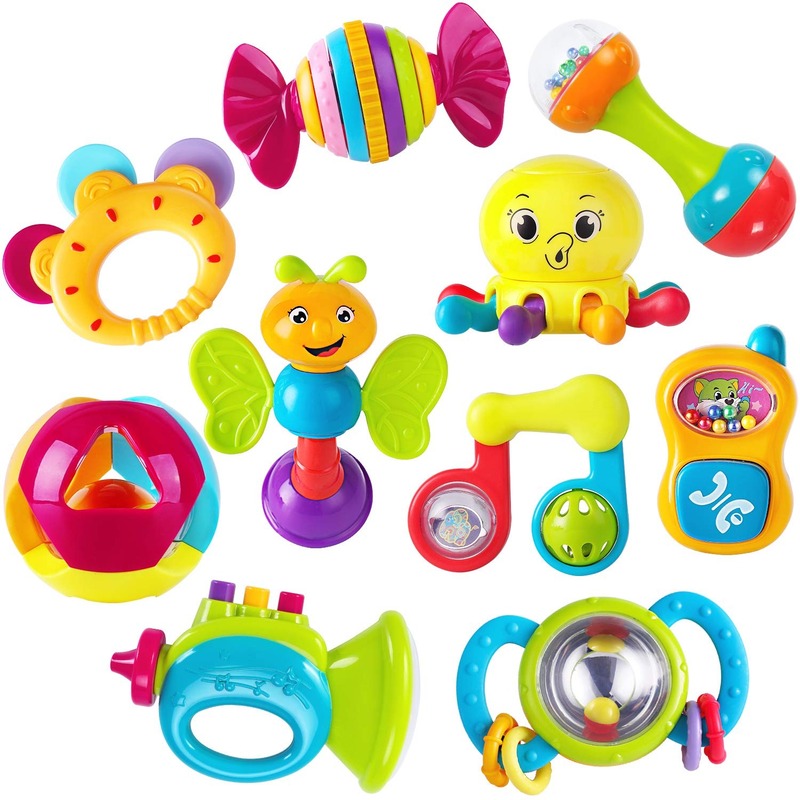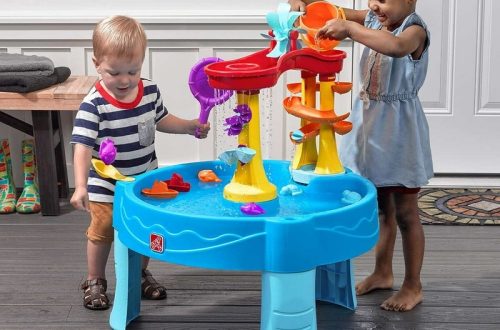The Importance of Musical Toys in Child Development
Musical toys for kids are more than mere playthings. They are essential tools that spur development. From infant rattles to toddler keyboards, these toys can enhance brain functions. Kids improve their hearing, sight, and touch through musical play. They learn to recognize different sounds and rhythms.
Young minds grow better with music. Playing with musical toys helps kids with language skills. It introduces new words and sounds in a fun way. Children also learn about cause and effect. They see how their actions can create melodies or change tunes.
Music helps with emotional development too. Children can express themselves through the beats and tunes they create. They feel joy, excitement, and even calmness while playing their musical toys. Hand-eye coordination gets better as they grip and manipulate these instruments.
Moreover, musical toys for kids foster social interaction. They learn to share and take turns. They also develop listening skills while playing with others. Music is a universal language, and playing it together can bridge gaps. Kids learn about teamwork and build friendships during musical play.
In summary, musical toys are vital for growth. They help with cognitive, emotional, and social development. Parents should consider them key parts of their child’s playtime. Remember, even simple musical toys can make a big difference.
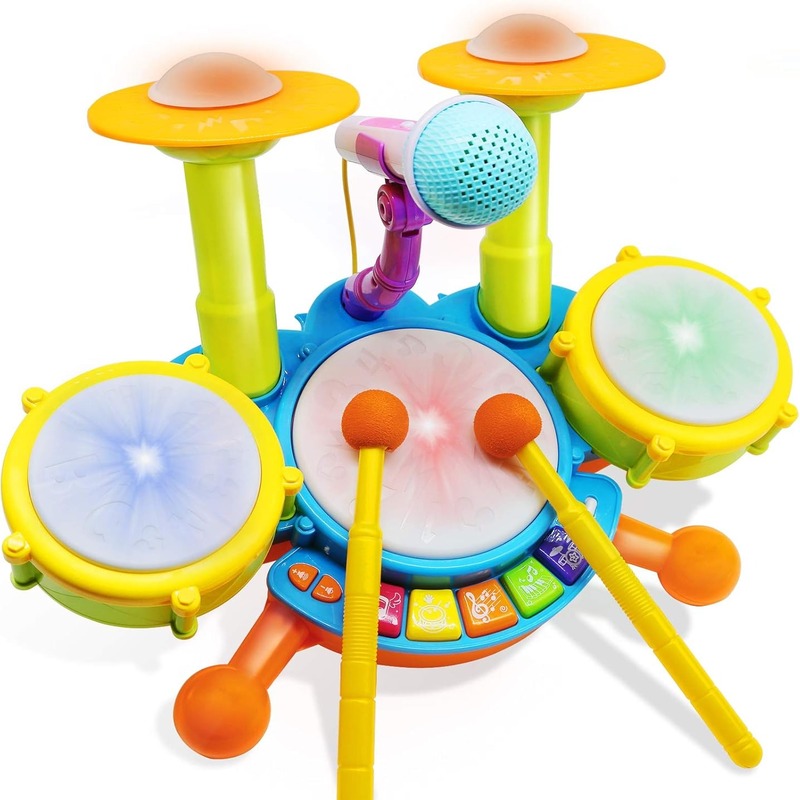
A Guide to Different Types of Musical Toys
When it comes to selecting musical toys for kids, variety is key. Each type of toy offers unique benefits and challenges, making it critical to choose wisely to support a child’s development. Here are several types musicians can spice up playtime and learning for children.
Percussive Instruments
Simple and intuitive, percussive toys like drums, shakers, and xylophones are great for beginners. They help children develop a sense of rhythm and coordination. Kids strike or shake these toys to produce sounds, learning about cause and effect.
Wind Instruments
Recorders, harmonicas, and toy trumpets fall under this category. They require breath control, which can improve lung capacity. Playing these toys also enhances facial muscles and helps with speech development.
String Instruments
Toy guitars and mini-violins offer a taste of stringed instruments. They aid in fine motor skills as kids learn to strum or pluck. Hand-eye coordination improves as children must focus on the strings to produce music.
Keyboard Instruments
Kids’ pianos and electronic keyboards introduce the basics of melody and harmony. Pressing keys can solidify the link between sound and action. Children also start to understand musical patterns and scales.
Electronic and Interactive Toys
Modern musical toys often include electronic components. They may light up, record sounds, or offer guided music lessons. These tech-savvy toys can motivate children to explore music more deeply.
Choosing the right type of musical toy can ignite a lifelong passion for music. By pairing play with educational value, parents and guardians ensure that young children derive maximum joy and learning out of musical play. Consider your child’s age, interest, and skill level when picking out musical toys for them.
Age-Appropriate Musical Toys for Every Stage
Selecting the right musical toys for kids is crucial at every age. As children grow, their abilities and interests change. So should the musical toys they play with. Here’s a breakdown of age-appropriate musical toys for each developmental stage.
Infants (0-1 Year)
For babies, sensory toys that make gentle sounds are ideal. Soft rattles and music boxes can soothe and stimulate an infant’s hearing. Look for bright colors and textures to engage their sight and touch.
Toddlers (1-3 Years)
Toddlers love hands-on play. Simple drums, toy xylophones, and tambourines are great. They offer a fun way to work on motor skills and coordination. Also, the repetition of sounds helps with memory.
Preschoolers (3-5 Years)
At this stage, children can handle more complex toys. Toy pianos and small guitars help them with melody and rhythm. These also prepare them for potential formal music lessons in the future.
School-Aged Children (5-7 Years)
Kids this age enjoy toys that challenge them. Recorders or electronic keyboards are good choices. These promote understanding of music theory and enhance fine motor skills.
Older Children (7+ Years)
Older kids will appreciate musical toys that offer more freedom. They can create their tunes with loop pedals or multi-instrument electronic toys. These encourage creativity and a deeper love for music.
Remember, musical toys for kids should match their growth stages. Each toy can build skills and confidence. Keep safety in mind, and watch as your child enjoys a harmonious playtime.
Safety Considerations When Choosing Musical Toys
When picking out musical toys for kids, safety is paramount. Below are essential safety considerations to keep in mind:
Materials and Construction
Ensure that the musical toys are made from non-toxic materials. They should be sturdy to withstand rough play. Check for quality seals or certifications that confirm safety standards.
Small Parts
For younger children, especially those under three, avoid toys with small parts. These can be a choking hazard. Always read the age recommendations on the packaging.
Volume Control
Some musical toys can be loud. Look for options with adjustable volume controls to protect your child’s hearing.
Edges and Corners
Choose toys with smooth edges and rounded corners to prevent injuries. Sharp edges or corners can cause cuts or bruises.
Battery Safety
If the toy requires batteries, ensure the battery compartment is secure. It should not be accessible to young children to prevent ingestion of batteries.
Supervision
Always supervise your child during play, particularly with new musical toys. This helps you ensure they are using the toy correctly and safely.
Providing safe musical toys for kids is essential for worry-free play. By considering these safety tips, you can help create a secure environment for your child’s musical exploration.
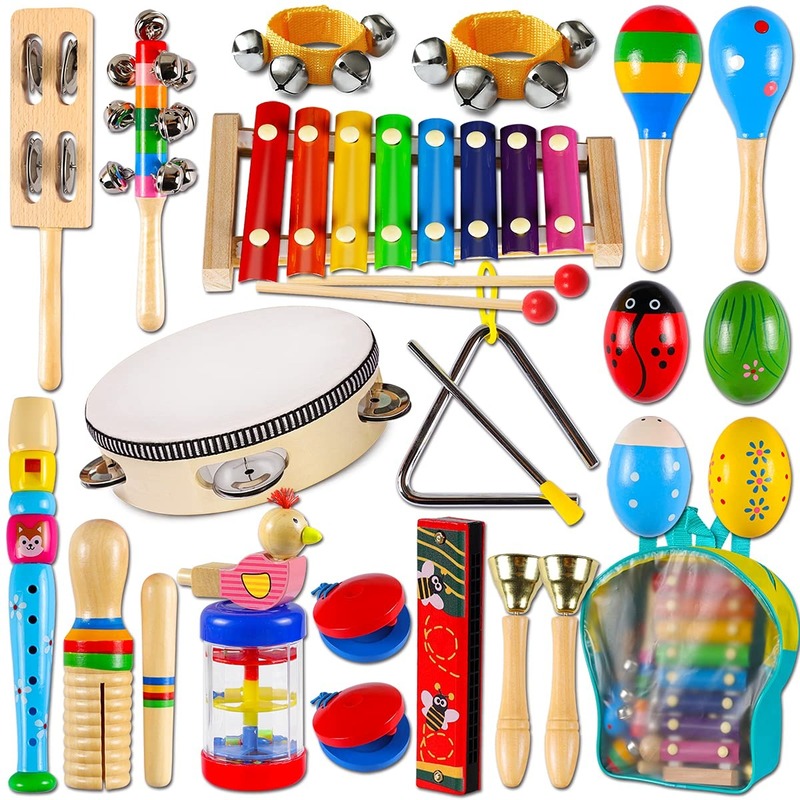
Top Musical Toys for Kids in 2023
Finding the best musical toys for kids each year is exciting. Here are the top picks for 2023 that parents and educators should consider.
Percussive Instruments
Brand new electronic drum sets have taken the spotlight. They come with adjustable volume, making them safe for ears. Their durable design withstands enthusiastic play.
Wind Instruments
Colorful toy saxophones are the rage. They are lightweight, easy to hold, and promote respiratory control. Plus, they’re fun for solo or group jams.
String Instruments
Ukuleles for kids are trendy. They’re small, easy to handle, and perfect for tiny fingers. Many come with online tutorials to start learning quickly.
Keyboard Instruments
Mini digital pianos with recording features are in demand. Children can listen to their own music, encouraging practice and improvement.
Electronic and Interactive Toys
Interactive music mats that light up when stepped on spark a lot of joy. They teach coordination and are great for active play. Another hit is the musical robot that teaches coding basics through tunes.
Choosing one of these musical toys for kids can heighten their learning experience. It’s a joyous way to bring music into their lives. Pick one that suits your child’s age and interests, and watch their creativity soar.
Benefits of Interactive Musical Play
Interactive musical play brings multiple benefits to a child’s development. It encourages kids to be more active and engaged while learning. Here’s how interactive play can be beneficial:
- Boosts Cognitive Skills: Interactive musical toys often challenge children to think and act quickly. This can sharpen their problem-solving and memory recall abilities.
- Enhances Physical Coordination: Many interactive musical toys require movement. These movements help children improve their hand-eye coordination and overall motor skills.
- Promotes Social Skills: Playing music together teaches kids about cooperation. They learn to share, take turns, and work as a team.
- Encourages Creativity: With interactive toys, kids can create unique sounds and songs. This fosters their creative thinking and boosts their confidence.
- Improves Emotional Intelligence: Musical play can help kids recognize different emotions. They learn to express their feelings through the music they create.
- Teaches Patience and Discipline: Learning to play a musical instrument or game teaches children the value of persistence and diligence.
Overall, the interactive aspect of musical toys turns learning into a dynamic process. It blends fun with education, leading to a rich, enjoyable experience for kids. Parents will find that musical toys for kids not only keep their children entertained but also contribute to their growth and learning.
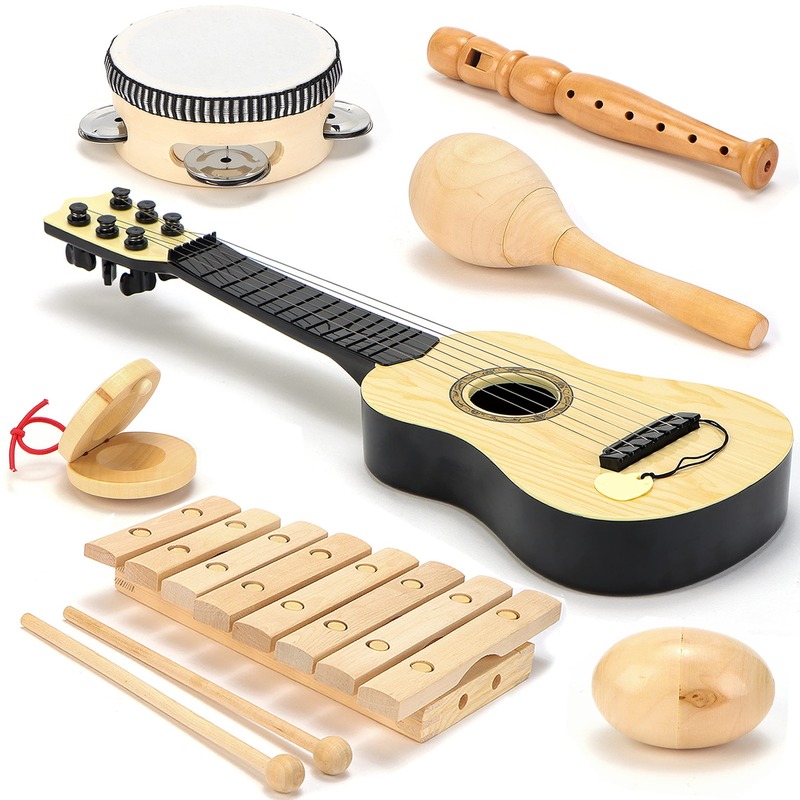
How to Introduce Your Child to Musical Toys
Introducing your child to musical toys is a fun and exciting process. Here are some simple steps to help them get started:
- Start with Basics: Begin with simple toys like rattles and shakers. They are easy to use and enjoyable.
- Choose Age-Appropriate Toys: Pick toys that fit your child’s age and motor skills. Infants may do well with soft rattles, while older children might prefer keyboards or string instruments.
- Create a Musical Environment: Play music at home. Let your child see and hear you enjoying music.
- Participate Together: Play with musical toys alongside your child. This shows them how much fun music can be.
- Encourage Exploration: Allow them to explore the sounds and functions of their musical toys freely. Exploration fosters a deeper interest.
- Guide Their Play: Teach them how to use the toys. Show them the cause and effect of hitting a drum or blowing into a whistle.
- Make It Routine: Have regular music playtime. Consistency helps build comfort and skills with musical toys.
- Praise Their Efforts: Applaud their musical attempts, no matter how noisy. Positive reinforcement boosts their confidence.
These steps will ensure your child has a pleasant introduction to musical play. It will also lay the foundation for a lifelong appreciation of music. Remember to keep musical toys for kids within reach, making it easy for them to grab and start playing whenever they feel inspired.
Nurturing a Love for Music Through Play
The path to a child’s musical appreciation is paved during playtime. Fostering a love for music in young hearts is vital.
- Make Music Part of Daily Life: Incorporate music into everyday activities. Sing songs during bath time or play instrumental music during meals.
- Expose Them to Various Genres: Allow children to hear different types of music. From classical to pop, diversity can spark an interest.
- Attend Live Music Events: Take your child to concerts or local music festivals. Watching live performances can be thrilling.
- Encourage Musical Role-Playing: Pretend games where children are musicians can inspire them. They can pretend to be singers, drummers, or piano players.
- Provide Accessible Instruments: Keep musical toys for kids within easy reach. This lets them play music whenever the mood strikes.
- Craft Homemade Instruments: Creating simple instruments at home can be fun. It can show children how music can come from anything.
- Celebrate Musical Milestones: Applaud children when they learn a new song or master a musical toy. Celebrating small wins can motivate them.
- Listen to Their Music: When your child plays, listen attentively. Show interest and praise their creativity.
Incorporating these tips can deeply embed music in a child’s life. Playtime becomes a discovery zone, filled with sounds, beats, and melodies. As they grow, musical toys for kids can lead to a deeper love of music. It can become a part of who they are, all through the power of play.
